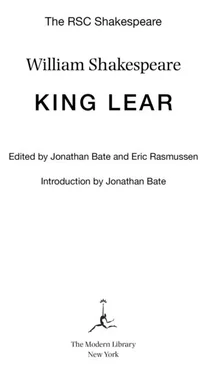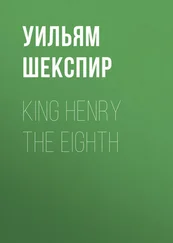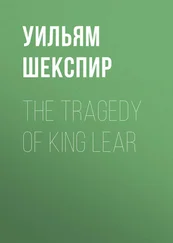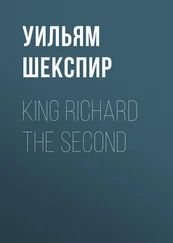уильям шекспир - King Lear
Здесь есть возможность читать онлайн «уильям шекспир - King Lear» весь текст электронной книги совершенно бесплатно (целиком полную версию без сокращений). В некоторых случаях можно слушать аудио, скачать через торрент в формате fb2 и присутствует краткое содержание. Год выпуска: 2011, ISBN: 2011, Издательство: Random House Publishing Group, Жанр: Старинная литература, на английском языке. Описание произведения, (предисловие) а так же отзывы посетителей доступны на портале библиотеки ЛибКат.
- Название:King Lear
- Автор:
- Издательство:Random House Publishing Group
- Жанр:
- Год:2011
- ISBN:978-1-58836-828-7
- Рейтинг книги:3 / 5. Голосов: 1
-
Избранное:Добавить в избранное
- Отзывы:
-
Ваша оценка:
- 60
- 1
- 2
- 3
- 4
- 5
King Lear: краткое содержание, описание и аннотация
Предлагаем к чтению аннотацию, описание, краткое содержание или предисловие (зависит от того, что написал сам автор книги «King Lear»). Если вы не нашли необходимую информацию о книге — напишите в комментариях, мы постараемся отыскать её.
King Lear — читать онлайн бесплатно полную книгу (весь текст) целиком
Ниже представлен текст книги, разбитый по страницам. Система сохранения места последней прочитанной страницы, позволяет с удобством читать онлайн бесплатно книгу «King Lear», без необходимости каждый раз заново искать на чём Вы остановились. Поставьте закладку, и сможете в любой момент перейти на страницу, на которой закончили чтение.
Интервал:
Закладка:
Lines 115–264:Edgar answers the summons but does not identify himself, except that he is “as noble” as Edmund. They fight and Edmund is mortally wounded, but Goneril argues that he is not defeated because he was not bound to fight “An unknown opposite.” Albany demonstrates the shift in power between them as he tells her to “Shut [her] mouth” and produces her letter to Edmund. Goneril flees. Edmund admits the charges and wishes to know his killer, as he will forgive him if he is noble. Edgar reveals his identity and says that they should “exchange charity.” He argues that “The gods are just,” perhaps a response to Gloucester’s lament in Act 4 Scene 1. Edgar relates how Gloucester died on being told of the true identity of the man who has led him in his blindness: his heart was too weak to support the extremes of “joy and grief” provoked by the knowledge. A messenger brings news that Goneril has poisoned Regan and stabbed herself. Their bodies are brought onstage as Kent arrives, seeking Lear. Edmund resolves to do “some good” before dying and reveals that Lear and Cordelia are condemned to death, and that Cordelia’s hanging will be made to look like suicide. He sends his sword as a “token of reprieve” and is carried out.
Lines 265–348:Howling, Lear carries in Cordelia’s body. He tries to revive her, ignoring Kent’s attempts to speak to him, and reveals that he killed the executioner, remembering “the day” that he “would have made [them] skip,” a brief return to his previous, regal self before he disintegrates once more. He dies believing that he sees Cordelia breathe, and Kent begs his own heart to break. Edmund’s death is reported and Albany asks Kent and Edgar to rule and sustain “the gored state,” but Kent refuses, feeling death is near. Despite Albany’s assertion that “All friends shall taste / The wages of their virtue, and all foes / The cup of their deservings,” any sense of justice, human or divine, seems scant, and the play’s resolution is bleak.
KING LEAR IN
PERFORMANCE:
THE RSC AND BEYOND
The best way to understand a Shakespeare play is to see it or ideally to participate in it. By examining a range of productions, we may gain a sense of the extraordinary variety of approaches and interpretations that are possible—a variety that gives Shakespeare his unique capacity to be reinvented and made “our contemporary” four centuries after his death.
We begin with a brief overview of the play’s theatrical and cinematic life, offering historical perspectives on how it has been performed. We then analyze in more detail a series of productions staged over the last half-century by the Royal Shakespeare Company. The sense of dialogue between productions that can only occur when a company is dedicated to the revival and investigation of the Shakespeare canon over a long period, together with the uniquely comprehensive archival resource of promptbooks, program notes, reviews, and interviews held on behalf of the RSC at the Shakespeare Birthplace Trust in Stratford-upon-Avon, allows an “RSC stage history” to become a crucible in which the chemistry of the play can be explored.
Finally, we go to the horse’s mouth. Modern theater is dominated by the figure of the director. He or she must hold together the whole play, whereas the actor must concentrate on his or her part. The director’s viewpoint is therefore especially valuable. Shakespeare’s plasticity is wonderfully revealed when we hear directors of highly successful productions answering the same questions in very different ways.
FOUR CENTURIES OF
KING LEAR:
AN OVERVIEW
The first Lear was Richard Burbage, the leading actor with Shakespeare’s company, the King’s Men. He was described by an anonymous elegist listing his best-known roles as “Kind Lear.” 1Little is known otherwise of the earliest performances. The Fool is thought to have been played by Robert Armin, the company’s leading comic actor after the departure of Will Kempe. A talented singer and musician, Armin was noted for his witty paradoxical fooling. Some scholars have, however, suggested that Armin may have played Edgar, since Tom o’Bedlam speaks a kind of fool’s language and Armin was equally capable of the multiple role changes that the character puts himself through. This casting would have opened up the possibility for a boy actor to double the roles of Cordelia and the Fool, who never appear on stage together. Such doubling would give added poignancy to the line “And my poor fool is hanged,” but it remains counterintuitive to suppose that Armin was cast in any role other than that of the Fool.
There is a record of a court performance at Whitehall on St. Stephen’s night, 26 December 1606. It was a bold choice to play the mad king and the image of a “dog obeyed in office” before the court. A play of “king Lere” was performed at Gowthwaite Hall in Yorkshire in 1610. This was probably Shakespeare’s version, not the old Leir play (which recently scholarship has ascribed to Thomas Kyd, author of the highly successful Spanish Tragedy ). A company of English actors in Dresden in 1626 played the “Tragoedia von Lear, König in Engelandt,” probably also Shakespeare’s version.
The play was revived briefly after the Restoration of the monarchy in 1660 and subsequent reopening of the theaters, but in 1681 Nahum Tate staged a production using a text that he himself had adapted. In his dedicatory epistle Tate emphasized the idea of the rough and unfinished nature of Shakespeare’s work. It was a “heap of jewels” that needed to have order, regularity, and polish applied to it for its true beauty to be revealed. Tate simplified language, plot, and character, eliminating the Fool and much of the play’s complexity. He included a love story between Edgar and Cordelia, together with a confidante for Cordelia, Arante. The play’s happy ending concludes with Lear restored, handing his throne over to Edgar and Cordelia. Tate’s Lear and various revised forms of the adaptation, including one by David Garrick, replaced the original on stage, except possibly in Dublin, where the Smock Alley promptbooks are based on Shakespeare’s printed text. The authentically Shakespearean original was not performed on the London stage again, save for a handful of performances by Edmund Kean in the early nineteenth century, until Macready’s restored (if heavily cut) production of 1838.
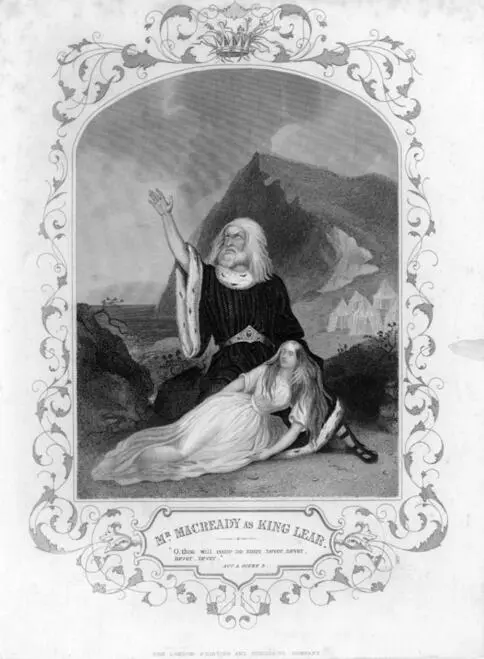
2. William Charles Macready as Lear in 1838, with the dead Cordelia: until this revival, the stage was dominated by Nahum Tate’s reworking with a happy ending in which Cordelia survives and marries Edgar.
Thomas Betterton had been Tate’s Lear. David Garrick, the most celebrated actor-manager of the eighteenth century, restored parts of Shakespeare’s text in his own production at Drury Lane but retained Tate’s ending. His performance was acclaimed for its pathos and humanity. In his diary James Boswell records: “I was fully moved, and I shed abundance of tears.” 2The Shakespearean editor George Steevens, after confessing his view that “Tate’s alteration … had considerably improved the great original,” went on to extol the virtues of Garrick’s acting: “Were we to inquire in what particular scene Mr. Garrick is preeminently excellent it would be a difficult circumstance to point it out.” He did, though, single out Garrick’s “mode of speaking the curse at the end of the first act of the play.” In his view Garrick “gives it additional energy, and it is impossible to hear him deliver it without an equal mixture of horror and admiration.” 3John Philip Kemble (Theatre Royal, Drury Lane, 1788) played Lear with his tragedian sister, Sarah Siddons, as Cordelia. The critic and poet Leigh Hunt was disappointed: “He personated the king’s majesty perfectly well, but not the king’s madness … he is always stiff, always precise, and he will never, as long as he lives, be able to act any thing mad unless it be a melancholy mad statue.” 4
Читать дальшеИнтервал:
Закладка:
Похожие книги на «King Lear»
Представляем Вашему вниманию похожие книги на «King Lear» списком для выбора. Мы отобрали схожую по названию и смыслу литературу в надежде предоставить читателям больше вариантов отыскать новые, интересные, ещё непрочитанные произведения.
Обсуждение, отзывы о книге «King Lear» и просто собственные мнения читателей. Оставьте ваши комментарии, напишите, что Вы думаете о произведении, его смысле или главных героях. Укажите что конкретно понравилось, а что нет, и почему Вы так считаете.
